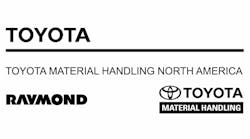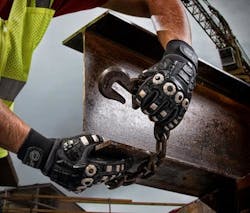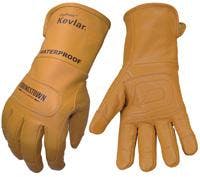"It's hard to peel a banana without your thumb. It's hard to button your shirt without the use of your thumb."
What seems obvious isn't always obvious to employees, says John Bell, EHS operations leader for FMC's Health & Nutrition Business. The employees in his division make up about 20% of the 6,000 FMC employees around the world. FMC manufactures a wide variety of products, ranging from herbicides and fungicides to health and nutrition products to the lithium used in the manufacture of ceramics and rubber, pharmaceuticals and batteries.
Starting three or four years ago, safety leaders at the company recognized that there was an uptick in hand injuries. There was one serious hand injury in particular, says Bell, that caught management's attention. One worker lost part of his finger when it got caught in a rotary valve he was able to access through a hatch.
The business implemented what Bell calls a "mandatory corrective action plan," searching out the hundreds of similar openings throughout the business and removing or sealing them. Now to open them, employees need special tools.
"A significant number of hand injuries have been eliminated by that one action," says Bell.
Michelle L. Brown, CSP, FMC corporate process safety manager, admits the company has many diverse businesses with a lot of challenges when it comes to hand injuries. When the uptick in hand injuries was noted, a "Th!nk Safe" campaign was initiated that included a mandatory glove use standard for all locations.
"Our activities include: Implement a global glove standard; developing and launching several videos around hand safety; and analyzing our event data to drive targeted campaigns to address hand safety issues," says Brown.
Videos, many of them funny or featuring children's perspectives on hand safety, helped educate workers and bring home the importance of protecting their hands not only for themselves, but for all the activities they enjoy with their families.
Employees, as part of their education about hand protection, were told to "find hazards with their minds, not their hands," says Bell. They are expected to conduct job safety analysis and risk assessments to determine the hazards before work starts, so that proper safety measures – such as the appropriate hand protection and safety knives – are in place before they begin a task. As a result, the total recordable injury rate (TRIR) (all company sites – even those outside of the United States – report injuries based on OSHA standards) has dropped to .22 from .5 – .7.
The company offers what Bell calls "an unrestricted supply of gloves," adding, "We don't scrimp and save on hand protection. We want workers to wear gloves."
Off to a Good Start
Monte Mahin, CSP, director of safety and health at National Gypsum Co., started noticing a trend in 2015: "We were having a lot of hand injuries, a lot of cuts," he says. "We provided minimal hand protection along with safety knives, but hadn't given good guidance about what gloves to wear or made the use of safety knives and gloves mandatory."
Many of the injuries the company's 1,900 workers experienced were what Mahin calls "unexpected injuries." They weren't occurring during the course of the injured employee's regular work; rather, they were the result of employees doing activities outside of their normal scope of work. Nearly half of the company's recordable injuries – 40 to 45% – were hand injuries.
The company started a campaign in October to reduce hand injuries. Glove use was made mandatory for almost all work, including shoveling, sweeping, the use of any tool and when picking up products or equipment with the hands. While there are exceptions to the policy – if the glove itself could cause a hazard or for some job tasks that require very fine motor skills – employees must perform a hazard assessment indicating the task safely can be performed without gloves.
A hand safety and glove usage policy was developed, and a "glove team" was created that included plant managers and plant safety managers to ensure their input and to answer any questions they might have, since they would be reviewing the policy with their staffs and reporting back with any challenges in introducing it to workers. The policy includes the different gloves types for various business units and recommends a general purpose, maintenance, chemical, electrical and cut-resistant options, along with descriptions and photos of the types of gloves.
The workers embraced the program and the company invested in better gloves, two things that Mahin says led to a steep drop in hand injuries.
"The gloves cost a lot more money," Mahin admits. "But that's only on the front end; we have much lower costs on the back end. For me, we have to do what's necessary to keep our employees safe. It's about training, raising the level of awareness and preventing pain and suffering. We haven't had any cuts, abrasions or burns since the start of the year. It's hard to argue that the hand safety and glove usage policy is not necessary when we have data like that to back it up."
Tom Kinder, group HSE manager for a food manufacturing company that has several locations employing nearly 300 people in California and Indiana, has a lot of perspective about hand injuries. His current employer is very focused on safety and the reduction of injuries, but his previous employers did not share that focus. One company cared little about hand protection while another invested some resources in protecting workers but not enough.
When Kinder arrived at his current employer, hand injuries were an issue. In 2016, the company had 22 injuries requiring first aid; 12 were hand injuries. The HSE team got corporate buy-in to purchase cut-resistant gloves and to include their wear in the corporate PPE policy. A hand safety board was created that displayed the four types of gloves – food handling, general work, cut-resistant and chemical handling – to be used by employees and outlined which activity requires each type of glove.
Their efforts have paid off. Hand injuries have been greatly reduced so far in 2017.
Gloves are required for nearly all job tasks (with a few exceptions that are spelled out in the hand protection policy). Hand protection is discussed in tool box talks and safety training, and gloves are available all the time: "Because the one time they can't get them, that creates a lack of trust in our dedication to hand safety," says Kinder. "We don't want to create barriers to compliance."
Trends in Hand Protection
1. Better Dexterity
"Our industry continues to progress with manufacturing of gloves that provide greater dexterity, grip, and cut protection," says Larry Garner, CMO at MCR Safety.
"Yarn suppliers also are creating fibers that help make this possible. Thinner materials with cut-resistant properties are some of our fastest growing product offerings. Enhancements of polymers and impact resistant materials also are being incorporated to provide greater safety and injury reductions."
2. Overprotection
"We've seen a trend in companies leaning towards overprotecting when it comes to hand protection – which can actually be a hindrance to workers," says Steve Genzer, president and general manager, Ansell Industrial Global Business Unit. "For example, many end users choose gloves with high levels of cut resistance when they feel they need more protection and support to get the job done. However, a higher cut level doesn't necessarily translate into better performance and protection – instead you may need more grip to prevent material slippage or improved durability for a longer-lasting PPE product. When selecting hand protection, consider your daily tasks and the specific performance qualities you need from a glove to get the job done right."
3. Comfort is critical
When it comes to cut-resistant safety gloves, high comfort above all defines the qualities that ideally support the free motion, safe grip and natural dexterity of fingers and hand without any restrictions," says Nico Janssen, business manager for high performance textiles at DSM Dyneema. "Many safety gloves still do not provide the levels of comfort expected and needed by workers to perform their jobs efficiently."
4. Awareness of Lack of Global Standards
There is a rising interest in gloves that provide impact protection in industrial applications. Impact injuries account for almost half of all hand-related injuries in the oil and gas space.
But, says Rodney Taylor, sales and marketing manager for industrial PPE at D30, "In North America, there are really no government-mandated performance standards in place like we see in some other regions of the world with large-volume PPE consumption. The result is that safety professionals are faced with the daunting task of wading through thousands of different products – all with different performance claims – to select the appropriate PPE for their workers.
5. Multi-Hazard Protection
"As a manufacturer, we do a lot of customization," says Sarah Anderson, from the Magid Global Product Strategy Team. "Customers come to us looking for a single-glove solution to multiple problems. We recently had a customer who was using a heat-protecting glove to handle high-temperature aluminum, but who still had workers suffering crush and cut injuries. Their first hazard was heat, but they also needed to guard against impacts and cuts. We were able to modify their glove to give them complete protection.
6. Revised Standards and Innovation
"Both the U.S. and EU hand protection standards were revised in the past 12 months: ANSI/ISEA 105-2016 and EN 388: 2016. Both contain significant revisions specific to the classification of cut resistance," says Andy Olson, product director at Ergodyne.
"Advancements in glove materials continue to drive innovation in the hand protection category. Manufacturers continue to develop gloves that provide increased protection from hazards such as cut, puncture and abrasion without compromising dexterity, flexibility and hand function. In addition, materials that allow for the operation of a tablet or smartphone can be integrated into a glove's overall design so gloves can remain on (and hands remain protected)."
This article originally appeared in EHS Today.















